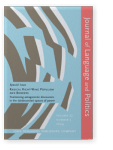A fence of opportunity
On how Vox’s radical right populist narratives frame and fuel crises in the border between Spain and Morocco
This article deconstructs the parliamentary discourses regarding two migratory incidents in Ceuta, May 2021, and
Melilla, June 2022, when hundreds of people attempted to cross the fences that separate Morocco from Spain. Most of them were
immediately deported, many injured, and several died. This analysis compares the density of populist, anti-populist, re-bordering,
and de-bordering references in forty-five speeches at the Spanish Congress regarding both tragic events. Vox speakers articulate a
distinct discourse that instrumentalises these incidents to convey a sense of existential crisis and to (re)define a populist
right-wing political identity based on moral hierarchies, a homogenising conception of society and the exclusion of a dangerous
“other.” Meanwhile some parties applied a populist logic to promote de-bordering views and others combined re-bordering and
de-bordering claims without imposing a populist frame. This was an opportunity to exhibit a progressive sense of place in
borderlands contrasting with Vox’s reactionary one.
Keywords: border, migration, populism, Spain, Morocco, radical right, parliamentary discourses, power-geometries, borderlands, crisis, content analysis
Article outline
- 1.Introduction
- 2.The border as a territorialised space of power: An inclusion or exclusion tool?
- 3.Tragedy at the southern gates
- 4.Data and methodology
- 5.(Re/De)bordering discourses and the populist logic of articulation
- 6.Conclusions
- Notes
-
References
